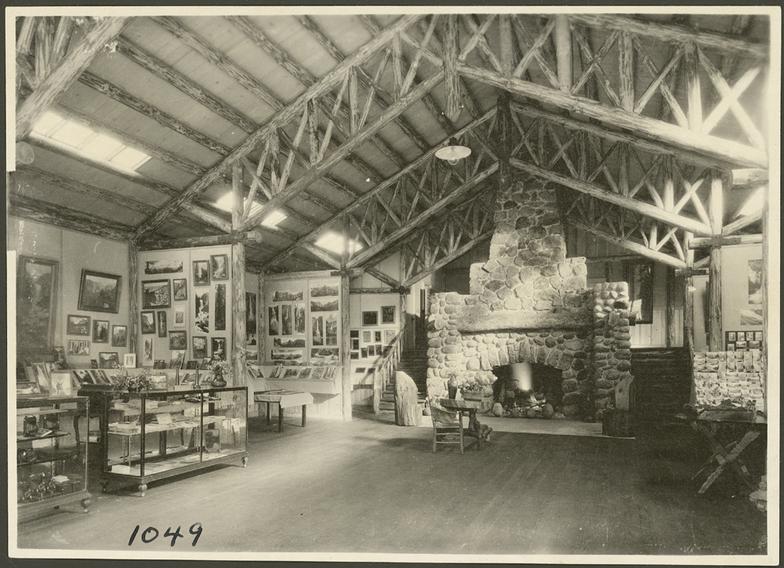We're committed to helping you
The Studio of the Three Arrows, New Village
Having worked diligently for many years to promote Yosemite as a tourist destination at the behest of the National Park Service, Pillsbury was granted a 20 year concession to do business there.
In 1924 he built a new facility in the location provided to him by the Park Service and had designed and built a large studio with an auditorium which seated 250 people. The theater showed both nature movies, which were free to the public, and first run motion pictures, which were much appreciated by locals. The trip out to a town which showed movies was long. During the summer season the theater was often filled to capacity and as the number of tourists increased so did the number of ordinary Americans who suddenly saw nature, not through the interpretation of writers and in still photographs but as it was. Lapse-time movies showed the growth and life cycle of wild flowers and other plants, and the microscopic motion pictures showed the world beyond human eyes, only then available to science in this dynamic, living form.
The Pillsbury Studio provided full service to the public. Amateurs wanting to develop their own photographs could use a dark room. Many young people and eager amateurs found that instruction in the use of their camera was provided cheerfully. Pillsbury wrote the chapter on how to photograph in Yosemite for the "Handbook of Yosemite National Park,: compiled and edited by Ansel Hall in 1921.
Tourists who wanted to flesh out their albums with already produced photos could purchase these in the shop. The real photo post cards might be the only souvenir less well-heeled visitors could afford, an these found their way into scrap books around the country as well. Post cards could be made out and mailed at the shop before or after watching the free nightly showings of nature movies, which were the same as those being seen at the most prestigious forums and podiums around the country. Below is the interior of the Pillsbury Studio as it was at the time of the fire in November of 1927.
Pillsbury's volume allowed him to provide excellent prices, service, and, combined with the unique abilities of its founder, effectively become the first nature center in the world.
At the time of the fire Pillsbury was negotiating with the other photographic concessionaires to allow them to sell their photos through his studio as part of a consolidation which would allow them to become share holders in a new company.
Through the steps at each side of the fireplace tourists entered the theatre, which stood in back of Studio. In this room Pillsbury also continued to conduct the photographic workshops so many, for instance Ansel Adams, Harry Pidgeon, and Earl Brooks, had attended at the far more constricted space in Old Village.

